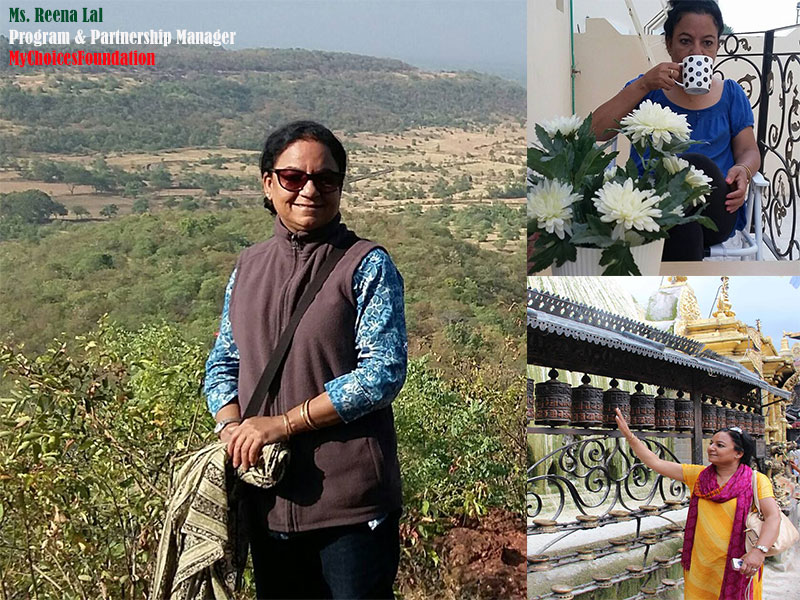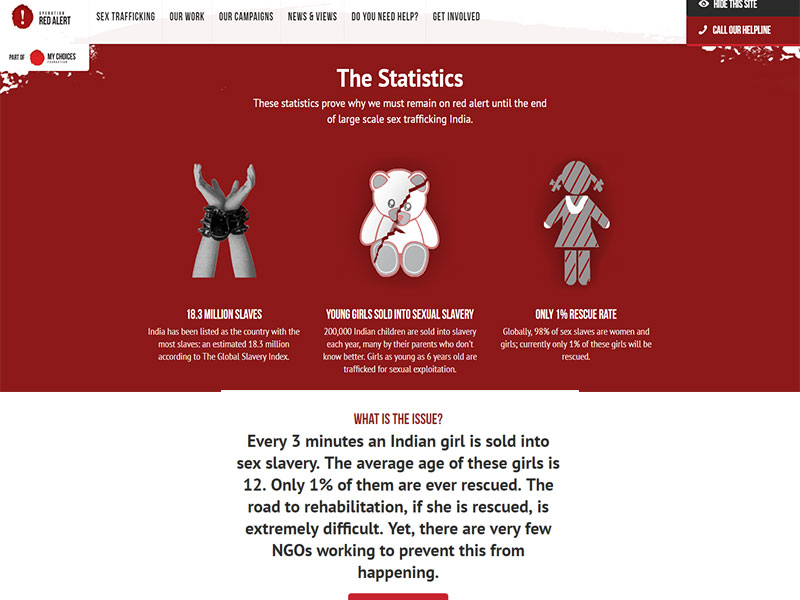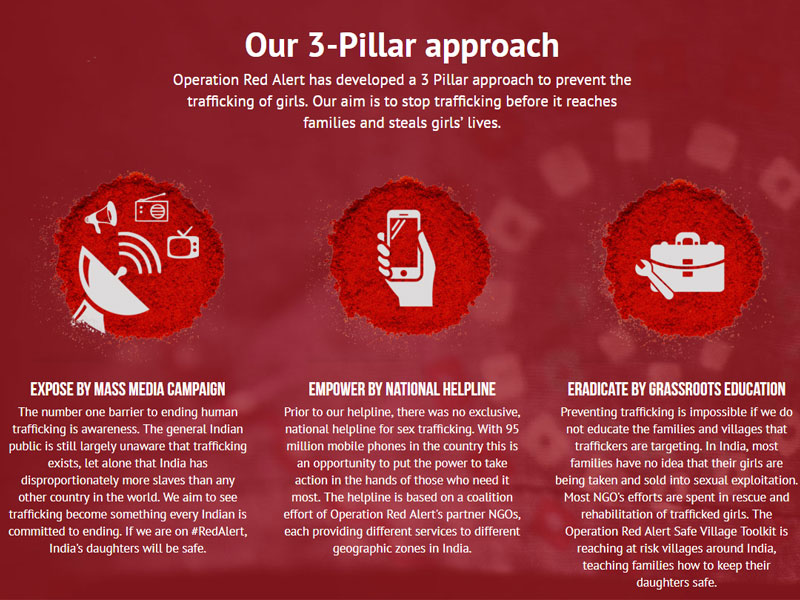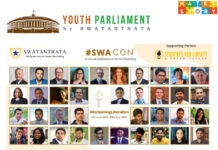
India has unfortunately become a source, destination, and transit country for men, women, and children subjected to forced labor and sex trafficking. It is estimated that millions of women and children are victims of sex trafficking in India. MyChoicesFoundation is an NGO that is actively working with the vision to end sex trafficking in India by preventing girls from ever entering it.
In the name of “Operation Red Alert,” they are conducting landmark research into compulsions behind the behavior of men who buy and sell girls for sex and are developing messaging that inspires lasting change. The organization has successfully brought down Sex trafficking in states like Maharashtra, Telangana, Andhra Pradesh, Karnataka, West Bengal, and Jharkhand.

MyChoicesFoundation committed to end Trafficking
HatkeStory was in conversation with Ms. Reena Lal, a Program & Partnership Manager at MyChoicesFoundation who has been in the field for more than 13 years. Ms. Reena gave us a firsthand insight into the issue of Human Trafficking in India. We feel this is something our readers ought to know about, and we have done our best to accommodate all necessary information and facts through this interview.
How is Human Trafficking affecting India?
Human trafficking is happening at both the Inter-state level and International level in India. Jharkhand has become a significant hub for trafficking and labor. The highest affected state is West Bengal, as there is a huge demand for young girls for several reasons. Due to a lack of sex education, there is a myth that sex with young girls or virgins will cure certain diseases. It is a well-organized crime, and the victims, often young girls, are forced to sleep with 10-15 men every day.
They are not living everyday life and are mostly addicted to alcohol, cigarettes, or drugs to get over stress. Their clock is just opposite ours, and unlike us, they are forced to work at night. Years of exploitation cause permanent damage psychologically, physically, emotionally, and economically.
How are victims trapped?
There are multiple factors involved. If you look at the situation empathetically, when the victim’s family is in debt, if some intermediary convinces her that there is an easy way to make money, the victim accepts out of compulsion. Contrary to popular belief, there is nothing like willing prostitution. These poor women don’t get anything in hand. It’s the traffickers and the middlemen who make all the money.
Traffickers are intelligent people who target vulnerabilities. They escort agencies in the form of friendship clubs. We have even come across disturbing cases where Campus interviews are being used for gathering details of young girls who are desperate for jobs. Natural calamities make many families vulnerable, and the traffickers are there to exploit women on the pretext of providing job opportunities.
Everybody is a victim of something or the other. Lack of awareness along with poverty, lack of livelihood options are some reasons. College students who fall under the trap are victims of commercialization. Money is necessary for good phones, costly clothes, and high profile lifestyle, and people go for it. For some, sex is an addiction. Earlier the trafficker had a face; now, the trafficker is anonymous. It’s so difficult to trace them.
Is it true that the victims are subjected to torture when they resist?
Yes. We have seen cases of torture where inhuman methods like chili powder, broken pieces of glass, starvation, and extreme violence have been used to mentally and emotionally break the victims.
-

MyChoicesFoundation committed to end Trafficking – Visit https://mychoicesfoundation.org/
Is prostitution legal in so-called Red Light areas?
The government agencies neither accept nor deny it. All adults who work there testify they are doing it at their own will. Many minors are victims of this organized monstrosity.
What measures do you take to prevent trafficking?
We believe in a concept called Positive Messaging. We conduct training programs for Local NGOs to prevent Human trafficking, basically sex trafficking. We tell stories through comic books and conduct programs at schools. We have a community program where a whole village participates. We have a dedicated helpline for reporting trafficking cases which is language-based for the convenience of end-users. We have strategic partners and implementation partners (local NGOs).
We are keen on teaching values to the young kids because tomorrow when they grow up, they would desist from visiting a red light area and value a person because he knows what kind of hell these victims go through. It is all about demand. More the demand, more the sex trafficking victims. If you cut the demand, the supply will be less. So the future boys are essential. There is a skit through which we educate the rural populace. The children enact the skit themselves and start noticing things at a young age.
We have also introduced a concept called Rakshaks, who take care of the village by being vigilant. This person’s job is to report suspicious activity. We have people called nodal teachers who are constantly in touch with the students in villages. We are trying as much as possible to prevent trafficking. Cricketers like MS Dhoni and Virat Kohli have endorsed our efforts. We have done more than 2000 programs. Operation Red alert at the village level, Operation Shakti at the school and college level, and awareness programs at the slum levels.

Can you tell us about rescue operations?
Earlier NGOs could directly rescue victims. Now, there is an Anti-Human Trafficking Unit (AHTU) of the police department. If there is a report of a minor in a brothel, they take immediate action. Young girls are hidden carefully by these traffickers, and hence rescue operations have to be done very fast. Girls are hidden in water tanks, behind fake walls, hidden rooms, and whatnot. Once the rescue is done, the magistrate decides to send her to a Govt. home or an NGO shelter home.
Once a woman is rescued, how difficult is it for them to adjust?
It depends on what kind of circumstances/situations the victim has been through. They often suffer from stress disorders and try to harm themselves. They are prone to very aggressive behavior. De-addiction is also a huge process. Meditation and Yoga-like activities help them sit at a place and regain concentration. The artistic ones are encouraged to indulge in activities like Cup painting and other arts. Computers are provided for educated girls based on their interest to help them come out of their past.
Our community is not ready to accept these victims into the workforce once they know the victim’s background. People become judgmental, and it is challenging to put them in jobs. Seeing the background changes perspective. It is nice to talk but very difficult to act. Will you hire her as your household help? How many people would be willing to do that?
Is child sex abuse a problem too in India?
Absolutely. Both educated and uneducated families have victims. It has always been there, but now cases are coming out more. A child who is very quiet at home should be treated as a red flag. Children are supposed to be active. A girl is unsafe inside her house at times. Known people can touch her inappropriately. Teachers come to know first that something is wrong with the child. We have to make sure that children speak openly to somebody they trust, especially parents.
What is the biggest challenge that you face?
Since this is voluntary work, many lose interest and demand monetary benefits to help us with the cause. The traffickers are also listening to our program carefully and are devising novel methods to jeopardize our efforts. It’s all about money. Thankfully Corporate Companies are opening up to help in the form of Corporate Social Responsibility (CSR).
We also came across cases of Stockholm syndrome where the victim is in love with the perpetrator and thinks the trafficker is her well-wisher. She feels the person who has saved her is the villain. Some women get used to such a line of work, and they are not ready to get rehabilitated. For somebody who has been in it for 10-15 years, it isn’t easy.
Sometimes these traffickers pose as Fathers and Mothers of the victims, and it is disturbing that parents themselves sell their children. Traffickers can come in any form. As a social worker, volunteer. They even go as victims in shelter homes.

HatkeStory salutes the efforts of Reena Lal and all the NGOs out there who are making a difference at the ground level to prevent Human Trafficking. If you encounter or are suspicious about any case of human trafficking, please contact the foundation helpline.
Visit the website for more information:
Like us on FB, if you find our content interesting: https://www.facebook.com/hatkestoryofficial/
Do you have an interesting incident or experience to share with the world? Write to us, and together we can discuss how to weave your story and present it to the world. Would you mind sending us your story?











Comments are closed.